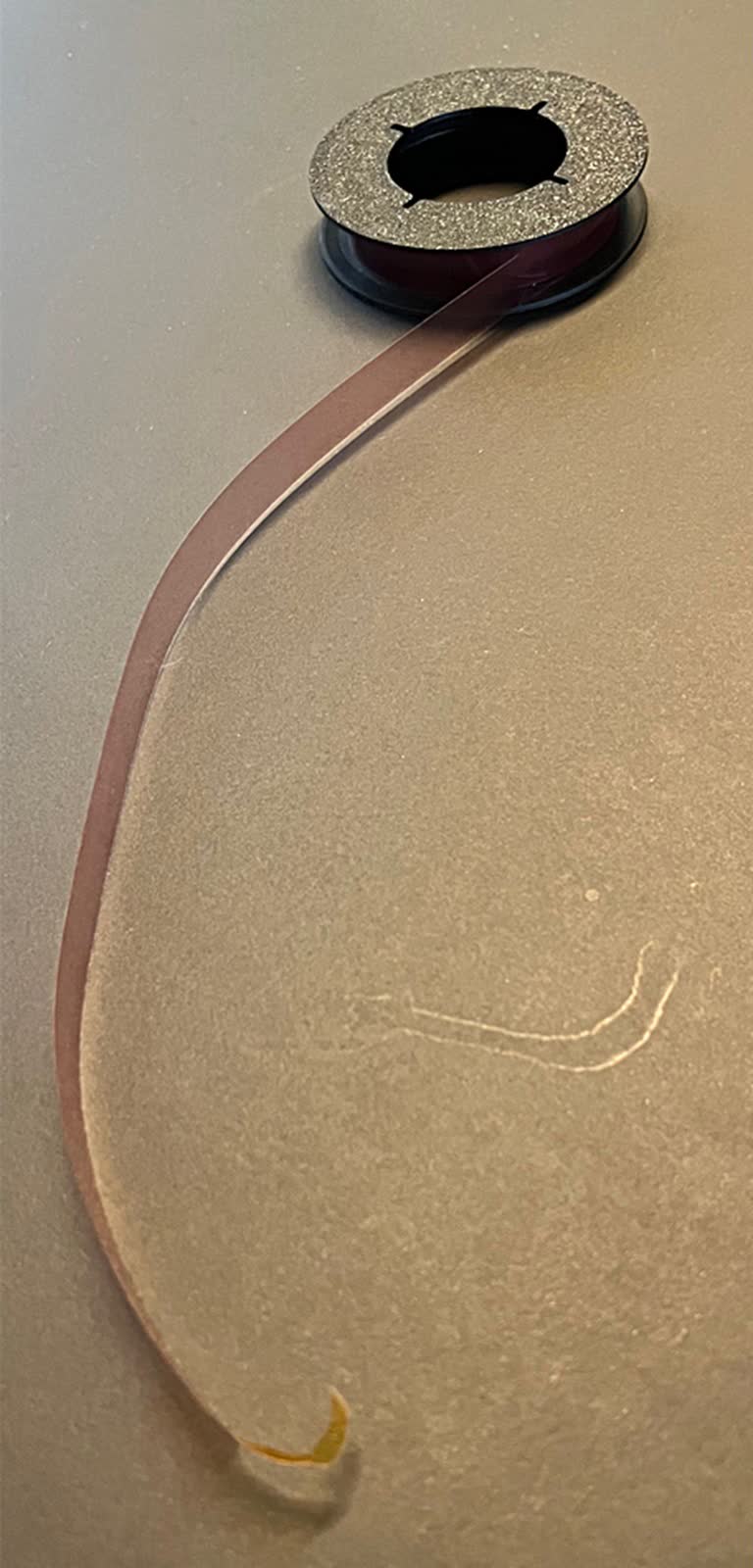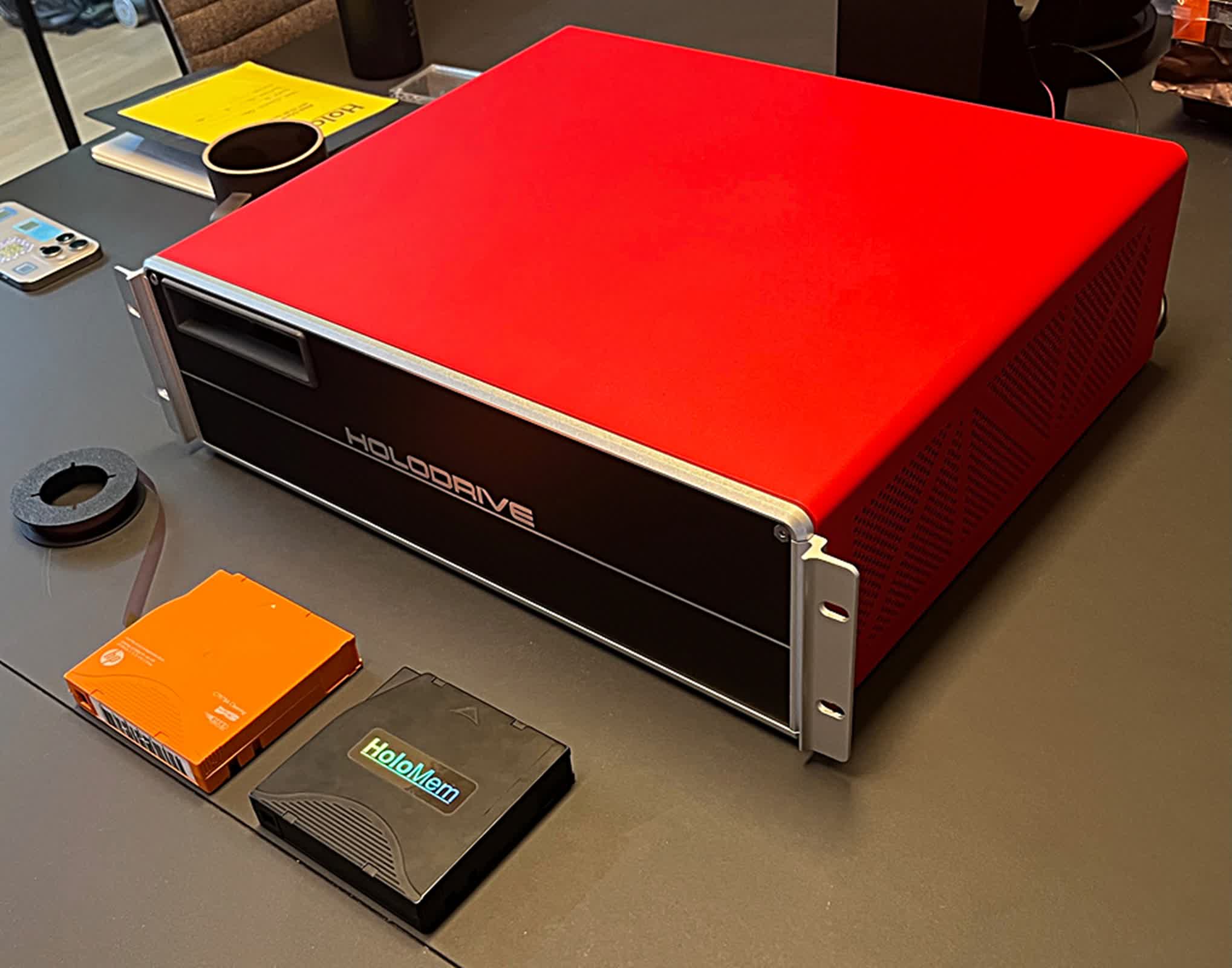Forward-looking: A British startup is taking a novel approach to data storage by developing a ribbon-based cartridge system that uses multi-layer holographic technology and promises a lifespan of more than 50 years. HoloMem's new drive and cartridge are designed to fit directly into existing Linear Tape-Open library racks, requiring no changes to the software that manages these widely used archival systems.
HoloMem's technology distinguishes itself from earlier holographic storage ventures by using mass-produced, low-cost components. The company's drive relies on a standard $5 laser diode and polymer sheets that are already manufactured at scale for other industries, unlike previous efforts that required expensive, specialized hardware.
In contrast to other experimental storage technologies like Cerabyte or Microsoft's Project Silica, which rely on glass slabs or platters, HoloMem's system uses an optical tape ribbon.
This design enables data center operators to upgrade existing tape libraries with higher-capacity, more cost-effective drive shelves. The new cartridges match the size of standard LTO tapes and are compatible with the robotic systems already in use. The system is designed to operate as a hybrid, allowing traditional LTO and HoloMem cartridges to run side by side under the same protocol.
At the core of the technology is a process that uses laser light to make permanent, visible changes in a specialized polymer, forming tiny three-dimensional data points known as voxels. These voxels create micro-holograms within a polymer ribbon approximately 100 meters long, encased between transparent layers. Each cartridge can store up to 200 terabytes of data in a write-once, read-many (WORM) format.

Charlie Gale, founder of HoloMem, previously worked at Dyson, where he contributed to the development of multi-hologram security labels. That experience led to the creation of a machine-readable hologram capable of storing multiple QR codes within a single image.
"You hold it up to your (smartphone) camera. It'll say this is a HO1O label … and it will scan the multiple QR codes in it and verify them," Gale told Block and Files. The technology earned several patents and introduced the idea of multi-layered, multi-channel data storage.
During the Covid-19 lockdown, Gale's team began experimenting with layering holographic images in light-sensitive polymer.
"What we originally did at HO1O for prototypes was to use a light-sensitive polymer material that you just exposed to laser light and, a bit like old-school camera film, whatever you expose it to, it locks polymer change and retains that image. This is an internal polymer change. It's in the emulsion," he explained.
The process evolved from slow, stencil-based exposure to a high-speed method using inexpensive laser diodes that can write thousands of bits per page at over 1,000 hertz.
The polymer itself is both affordable and robust, and was originally developed for automotive heads-up displays. The tape is constructed from a 16-micron polymer layer sandwiched between two PET laminations, producing a ribbon approximately 120 microns thick. Gale and his team believe this approach can exceed the volumetric density of current tape technologies.

The prototype, dubbed the HO1O drive beta, combines 3D-printed components with modified LTO loading mechanisms. "What this device isn't is a world-achieving data density. We have intentionally de-tuned this system because we want it to be robust and reliable," Gale said.
The ribbon is designed to withstand extreme temperatures and is immune to electromagnetic pulses, making it particularly attractive for archival and defense applications. "It does not degrade the data set. There's no such thing as data rot with this," he added.
Gale views existing magnetic tape technology as nearing its physical limits, relying on increasingly thin and fragile materials. HoloMem's thicker polymer tape is designed to offer both higher density and faster access times. "I think we can make a better drive. Call us LTO-15, whatever. We make a better, higher-density, longer-life, more robust version of an LTO drive and cassette," he said.
The startup has secured four patents covering its optical engine, media handling, and cartridge design. HoloMem operates with modest funding, having received £900,000 in grants from UK innovation programs along with some angel investment. The company is currently working with TechRe to test its drives in UK data centers and has partnered with archival software developers to integrate its technology into existing data management systems.
Looking ahead, HoloMem is exploring multi-channel recording, a technique that uses different wavelengths of light to write multiple data streams within the same physical space. This approach could significantly multiply each cartridge's storage capacity, with the potential for software-defined upgrades to unlock additional channels as needed.
Image credit: Block and Files
